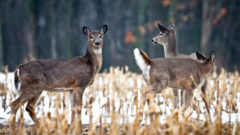Preview the NWS’s New Radar Page
Green Bay, WI
https://www.weather.gov/preview-radar.weather.gov/?settings=v1_eyJhZ2VuZGEiOnsiaWQiOm51bGwsImNlbnRlciI6Wy05MS4xNDYsNDMuNjk1XSwiem9vbSI6N30sImJhc2UiOiJzdGFuZGFyZCIsImNvdW50eSI6ZmFsc2UsImN3YSI6ZmFsc2UsInN0YXRlIjpmYWxzZSwibWVudSI6dHJ1ZSwic2hvcnRGdXNlZE9ubHkiOmZhbHNlfQ==#/


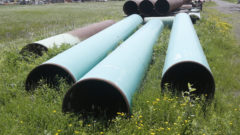
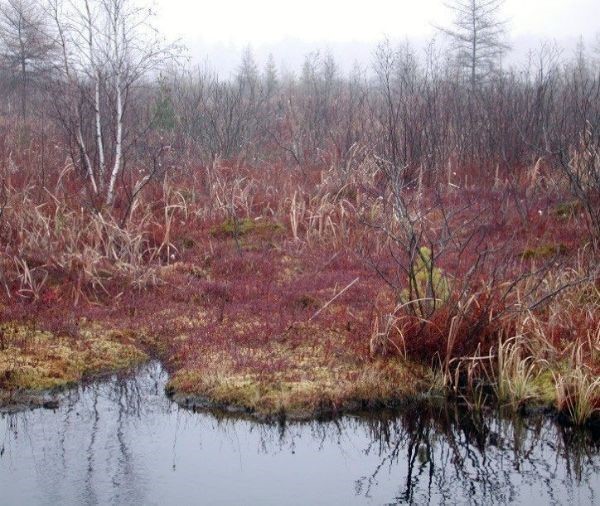
 career working in alternative investments in Chicago. Previously, Laura served as Vice President at Goldman Sachs, where she was responsible for managing the capital introductions and prime brokerage efforts in the central region. She began her professional career as an institutional investor at The University of Chicago Investment Office, followed by Glenwood Capital and The Pritzker Group. Ms. Payne received a master’s degree from The University of Chicago Booth School of Business and both a master’s and bachelor’s degree from Marquette University. Laura and her family have lived in Hyde Park for the past seventeen years and she has volunteered for a number of local groups, including serving on the Museum of Science and Industry’s President’s Council and Hyde Park School of Dance Advisory Committee. A passionate conservationist, Laura is hoping to raise awareness of core Alliance for the Great Lakes issues like water equity in Chicago.
career working in alternative investments in Chicago. Previously, Laura served as Vice President at Goldman Sachs, where she was responsible for managing the capital introductions and prime brokerage efforts in the central region. She began her professional career as an institutional investor at The University of Chicago Investment Office, followed by Glenwood Capital and The Pritzker Group. Ms. Payne received a master’s degree from The University of Chicago Booth School of Business and both a master’s and bachelor’s degree from Marquette University. Laura and her family have lived in Hyde Park for the past seventeen years and she has volunteered for a number of local groups, including serving on the Museum of Science and Industry’s President’s Council and Hyde Park School of Dance Advisory Committee. A passionate conservationist, Laura is hoping to raise awareness of core Alliance for the Great Lakes issues like water equity in Chicago.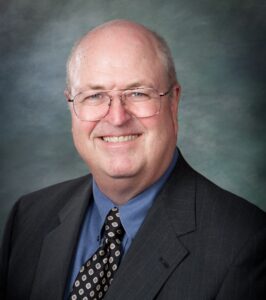 introduced many improvements in financial systems, factory automation and food safety, including a breakthrough probiotic treatment to enhance food safety without refrigeration. Before that, Bill was VP Finance for the US operations of CKD Corporation and the Colorado unit of PG&E. Bill has also served on the boards of directors for Signa Group, CKD Createc, and Bear Creek Water in Colorado. Bill is an avid if unaccomplished golfer and loves to zone out on long rides on his hybrid bike. He is a member of the International Association of Food Safety and the American Association for the Advancement of Science. He received a bachelor of science degree in systems engineering from the University of Illinois at Chicago and a master’s in finance and economics from the University of Chicago. Bill grew up in Chicago and spent his summers in Lake Michigan at a family getaway. His children, and their children, have become part of a multigenerational bond to this magnificent body of water. Bill hopes his participation in and support of the Alliance will help protect the lakes from the many threats they face.
introduced many improvements in financial systems, factory automation and food safety, including a breakthrough probiotic treatment to enhance food safety without refrigeration. Before that, Bill was VP Finance for the US operations of CKD Corporation and the Colorado unit of PG&E. Bill has also served on the boards of directors for Signa Group, CKD Createc, and Bear Creek Water in Colorado. Bill is an avid if unaccomplished golfer and loves to zone out on long rides on his hybrid bike. He is a member of the International Association of Food Safety and the American Association for the Advancement of Science. He received a bachelor of science degree in systems engineering from the University of Illinois at Chicago and a master’s in finance and economics from the University of Chicago. Bill grew up in Chicago and spent his summers in Lake Michigan at a family getaway. His children, and their children, have become part of a multigenerational bond to this magnificent body of water. Bill hopes his participation in and support of the Alliance will help protect the lakes from the many threats they face.
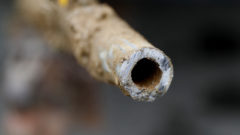

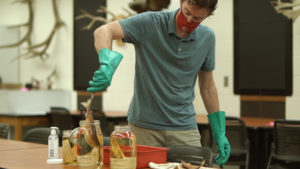
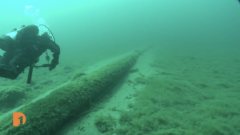
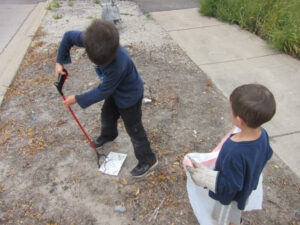
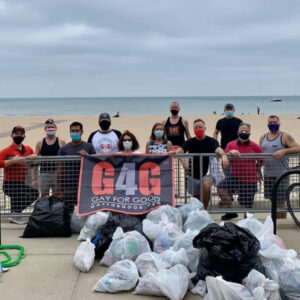 “This was really our comeback event,” says Matt Belcher, a Chicago chapter leader for the national service group
“This was really our comeback event,” says Matt Belcher, a Chicago chapter leader for the national service group 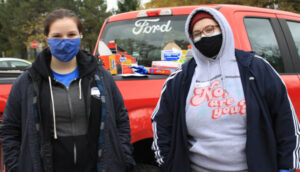 In Cleveland, Americorps volunteers Sara Morgan and Grace Vishnick had a similar experience. They organized about 50 people to clean Cleveland’s Euclid and Edgewater beaches for
In Cleveland, Americorps volunteers Sara Morgan and Grace Vishnick had a similar experience. They organized about 50 people to clean Cleveland’s Euclid and Edgewater beaches for 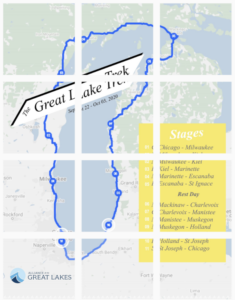 The most unusual outreach by an Ambassador during the pandemic is likely Tristyn Von Berg’s bike ride around Lake Michigan. Von Berg nicknamed his Trek commuter bike “Richard Gears” after his father. A South Africa native, he had recently moved to Chicago when he decided to make the 950-mile journey.
The most unusual outreach by an Ambassador during the pandemic is likely Tristyn Von Berg’s bike ride around Lake Michigan. Von Berg nicknamed his Trek commuter bike “Richard Gears” after his father. A South Africa native, he had recently moved to Chicago when he decided to make the 950-mile journey.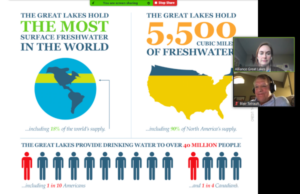 Blair Tatrault became an ambassador after retiring a few years ago.
Blair Tatrault became an ambassador after retiring a few years ago.